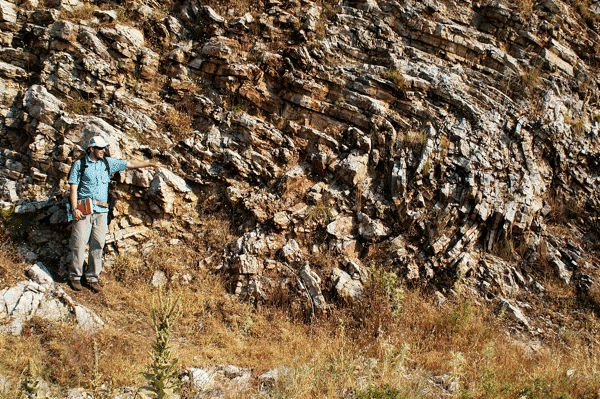Stop B.
Stop B is located at a fork in the road (see Figures FT-1, 2). Park in a way that it will be easy, following this stop, to take the right fork and continue up the mountain.
Though you will see outcrops of brown sandstone belonging to First Flysch Beds right at the fork, the purpose of this stop is to examine the character of Thin Platy Limestone Beds. This formation is very well exposed in the roadcuts as you walk up the road, in an easterly direction. If you walk up the road and examine these roadcut outcrops for a distance of ~100 m, you will develop a clear picture of the properties of Thin Platy Limestone Beds.
There are a number of interesting characteristics of the Thin Platy Limestone Beds that can be seen at Stop B (Figure FT-6): 1/ the thin, platy bedded character of this formation; 2/ concordant bedding-parallel lenses and layers of white and black chert; 3/ closely spaced jointing; and 4/ tight, strongly overturned chevron folds. Folding appears to have been produced by flexural slip mechanisms. [Section VI-D of companion paper describes Thin Platy Limestone Beds].
Figure FT06. Outcrop expression of Thin Platy Limestone Beds near Stop B.

Thin Platy Limestone Beds exposed in the vicinity of Stop B. Phil Nickerson is the geologist. Note the tight chevron folding of bedding and the intensely fractured nature of the limestone beds.
Now head 1.49 km up the road to Stop C.